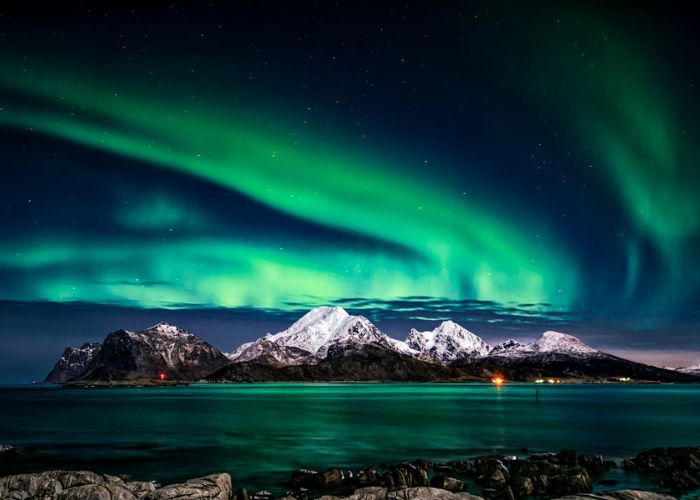The Northern Lights, or Aurora Borealis, is a mesmerizing spectacle that captivates the imagination of those fortunate enough to witness it. Traditionally observed in the high latitude regions around the Arctic, this natural light display paints the sky with vibrant hues of green, purple, and sometimes even red. However, what many may not realize is that under certain conditions, this stunning phenomenon can be seen much further south than usual, gracing skies in places where they are as unexpected as they are breathtaking.

The Science Behind the Aurora
The aurora borealis is caused by interactions between the Earth’s atmosphere and charged particles from the sun. These particles are carried towards the Earth by the solar wind and are mostly deflected by the Earth’s magnetic field. However, the magnetic poles allow some particles to enter the atmosphere, where they collide with gas molecules, causing bursts of light. This process creates beautiful auroral displays. The colors of the aurora are determined by the type of gas involved; oxygen produces green and red, while nitrogen gives off blue and purple hues.
Although typically confined to polar regions, strong geomagnetic storms can push the auroral oval southward, making the lights visible in unusually low-latitude areas. This happens during periods of intense solar activity when larger amounts of solar particles and stronger magnetic fields are ejected from the sun. During these events, places like the northern United States, Europe, and even more southerly locations can get a rare glimpse of the lights, turning a typical night sky into a spectacular cosmic show.
When the Lights Wander South
One of the most notable recent instances of the Northern Lights appearing in unexpected locations occurred during a significant geomagnetic storm. Observers in states like California and Texas reported seeing the aurora—a rare event that sparked excitement and fascination. These sightings challenge the typical perception that the Northern Lights are exclusive to Arctic locales, and they highlight the dynamic nature of our planet’s magnetic field and its interaction with solar activity.
This phenomenon not only offers a stunning visual experience but also provides valuable scientific data. Researchers study these events to better understand the complexities of space weather and its impacts on Earth. Such data is crucial, especially considering the potential risks that strong geomagnetic storms pose to satellites, communication systems, and power grids. Observing auroras at lower latitudes allows scientists to refine their models of how solar and geomagnetic processes affect our planet.
The Unpredictable Beauty of Auroras
The ability of the Northern Lights to appear in unexpected places serves as a powerful reminder of the dynamic and interconnected nature of our planet’s relationship with the sun. For those living far from the traditional auroral zones, witnessing this phenomenon can be a once-in-a-lifetime event that inspires awe and a deeper appreciation for the natural world.
As solar activity continues to cycle over an approximately 11-year period, there will be more opportunities to witness the Northern Lights in unusual locations. For the avid skywatcher and the curious observer alike, these occasions highlight the importance of staying informed about solar-geomagnetic forecasts. They also remind us that sometimes, the most extraordinary sights can appear when and where we least expect them, transforming an ordinary night into a spectacular display of nature’s beauty. Whether you are a lifelong aurora chaser or a casual stargazer, these rare appearances encourage everyone to look up and appreciate the wonders of the cosmos.